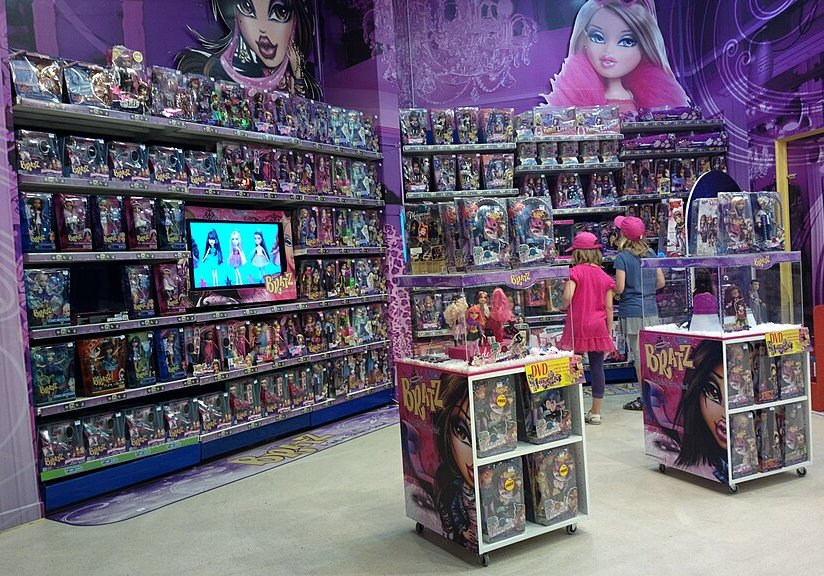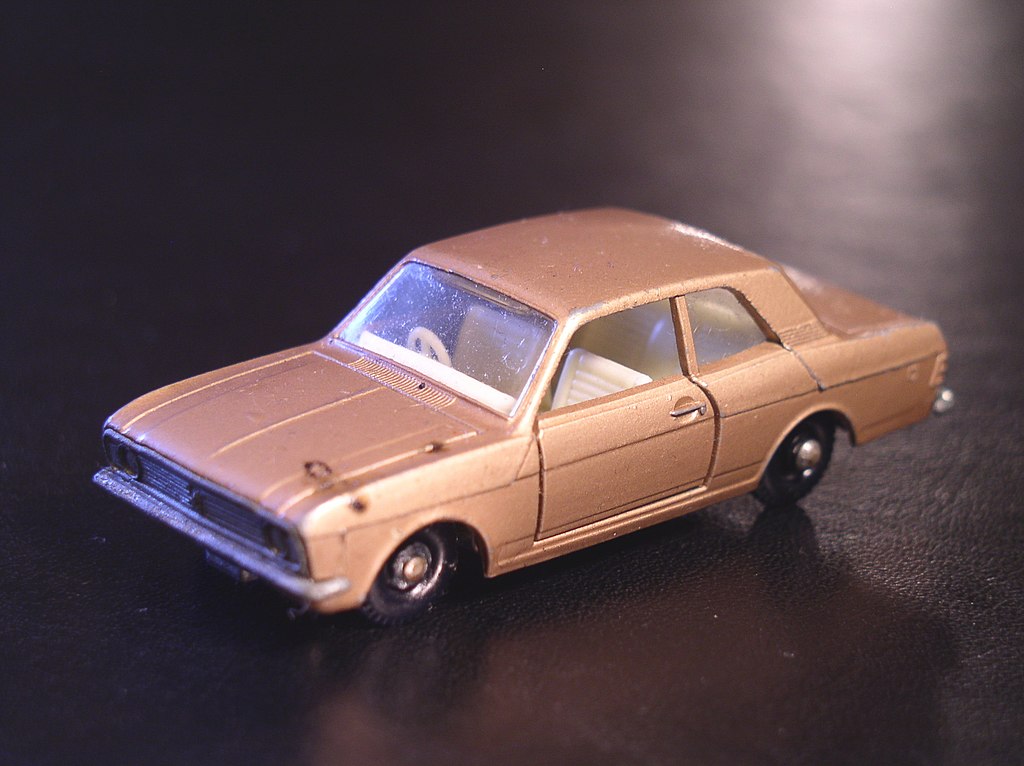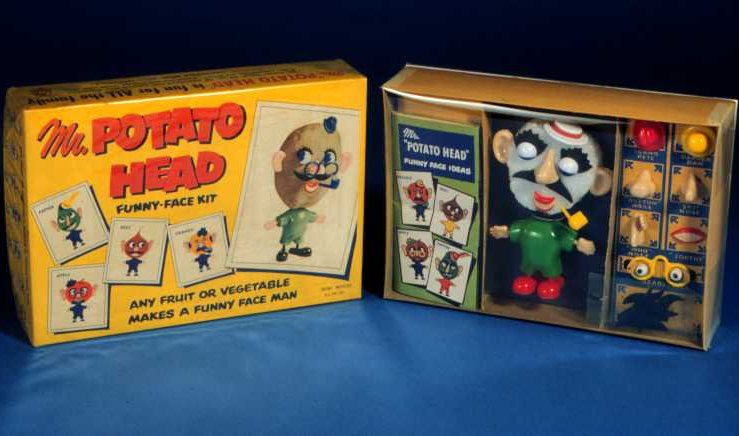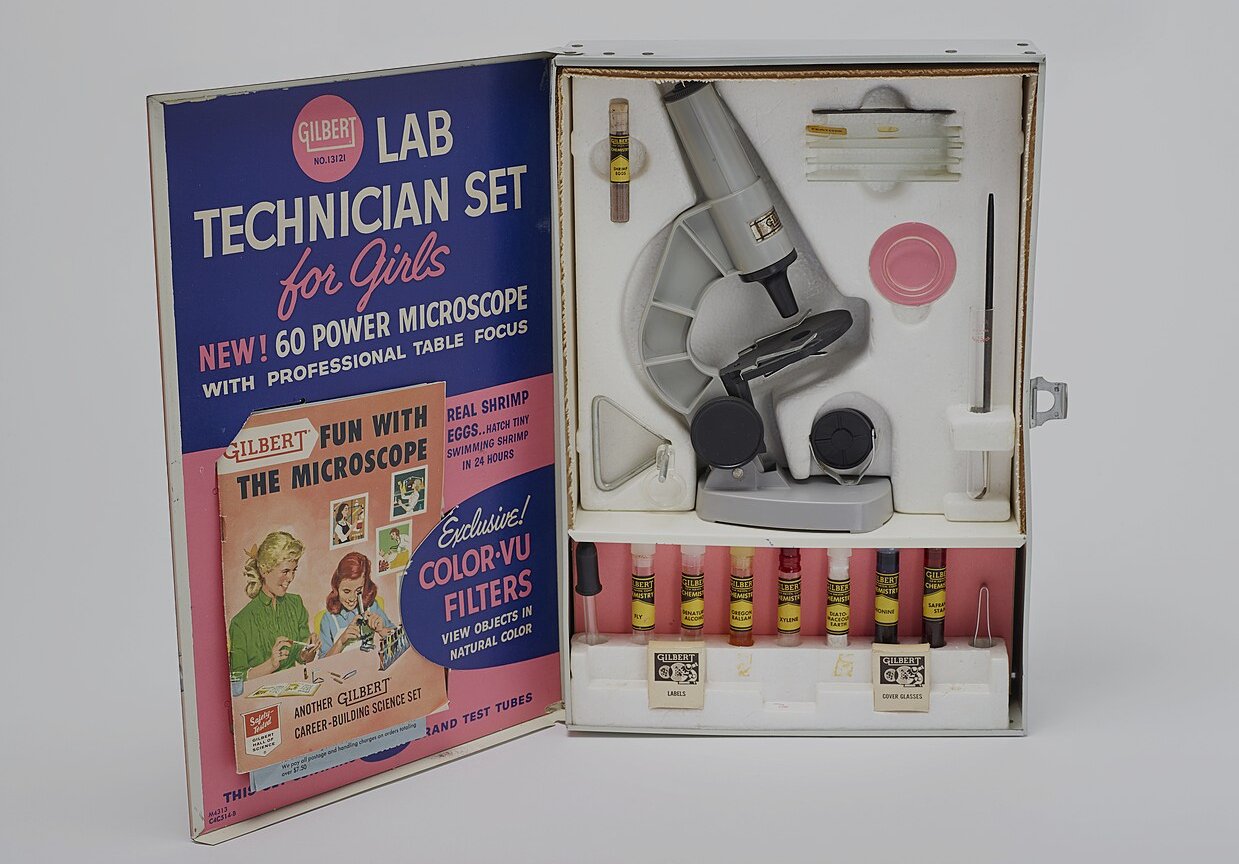The Most Iconic Toys Of All Time
Throughout history, toys have captured the hearts and imaginations of kids and adults alike. Join us as we explore the best toys in history, celebrating the timeless favorites that continue to bring joy and inspire creativity.
2000s
The 2000s were a golden era for toys, bringing us some of the best toys that defined a generation. From robotic pets like Zhu Zhu Pets to the creative fun of Bratz dolls, these toys captured kids' imaginations everywhere.
 Timo Tervo, CC BY-SA 2.0Wikimedia Commons
Timo Tervo, CC BY-SA 2.0Wikimedia Commons
Bratz
When Bratz dolls hit the scene in 2001, they brought a bold new style to the world of fashion dolls, leaving Barbie in the dust. These dolls had a modern, edgy look that critics thought was too mature for tweens, but that didn't stop them from becoming a massive hit.
Mindflex
Mattel’s Mindflex, released in 2009, uses a wireless headset to read your brainwaves and move a blue ball through obstacles, all with the power of your mind! While some scientists are skeptical about how it works, many users are amazed by what it can do.
Zhu Zhu
In 2009, Zhu Zhu Pets became a surprise hit as the must-have holiday toy during the recession. These cute robotic hamsters, originally priced at just $10, were so popular that some sold for thousands online. With nine different characters that snuggle and coo like real hamsters (minus the mess), the company has since expanded to include baby pets, puppies, and even space-fighting ninjas.
 Shoot for the Stars, Wikimedia Commons
Shoot for the Stars, Wikimedia Commons
1990s
The 1990s were a treasure trove of iconic toys that defined childhood for a generation. Let’s take a nostalgic journey through the best toys that made the 90s unforgettable.
Beanie Baby
Launched in 1993, Beanie Babies became a huge craze in the late 90s, with kids rushing to get their hands on these cute, bean-filled stuffed animals. Though they were mostly affordable, some special editions became so popular that rare ones can still sell for thousands of dollars today. These tiny toys became a cultural phenomenon and are still treasured by fans.
American Girl Doll
The American Girl franchise has captured the hearts of many with its dolls that have realistic personalities, reflecting girls from different periods of American history and modern times. Paired with popular fictional biographies, these dolls became must-haves, selling for around $100 each in special stores across the country.
 Jeff Sandquist, CC BY 2.0, Wikimedia Commons
Jeff Sandquist, CC BY 2.0, Wikimedia Commons
Furby
In 1998, Hasbro introduced Furby, a furry, animatronic pet that could speak its own language, “Furbish,” and gradually learn English. Kids were instantly charmed as Furby learned to say “I love you,” helping it sell 1.8 million units in its first year and 14 million the next—but it was this feature that would see the beloved toy banned across America. We'll get to that juicy story a bit later.

Sign up to our newsletter.
History’s most fascinating stories and darkest secrets, delivered to your inbox daily. Making distraction rewarding since 2017.
1980s
The 1980s were a golden era for toys, bringing unforgettable favorites that still spark nostalgia today. Classics like Polly Pocket and Cabbage Patch Kids turned into cultural icons, making the 80s one of the most memorable decades for playtime.
Cabbage Patch Kids
Cabbage Patch Kids skyrocketed to fame after a TV appearance in 1980, sparking a massive craze. By Christmas 1983, parents were lining up outside toy stores just to grab one for their kids, with over 3 million sold by New Year’s, an unforgettable frenzy that even inspired the holiday movie Jingle All the Way!
Polly Pocket
In 1989, the tiny Polly Pocket dolls, each under an inch tall, made their debut, created by Chris Wiggs for his daughter Kate. These tiny dolls lived in compact cases that little girls could carry around, just like their moms’ makeup kits, but inside each case was a magical world called Pollyville.
Skip-It
Skip-It, released in the 1980s by Tiger Electronics, was a simple yet addictive toy with a small hoop and ball that kids could spin around their ankles, counting each jump. Its catchy TV commercials on kids’ channels helped make it a huge hit, while parents loved its low cost and focus on getting kids moving.
 Saskatoon Public Library, CC BY 2.0, Wikimedia Commons
Saskatoon Public Library, CC BY 2.0, Wikimedia Commons
1970s
The 1970s introduced some of the most iconic toys of all time, blending creativity, technology, and fun. Favorites like the Rubik's Cube and NERF Ball became a cultural phenomenon. These toys defined a generation, sparking trends that continue to influence play today.
Rubik's Cube
Hungarian inventor Ernö Rubik created his first 3D puzzle cube in the 1970s, but it wasn’t until the 1980s that the Rubik’s Cube took off in the US, becoming a craze. Millions of people challenged themselves to line up the cube’s colored squares, a task made tricky by its rotating sides.
 Rameshng, CC BY-SA 3.0, Wikimedia Commons
Rameshng, CC BY-SA 3.0, Wikimedia Commons
NERF Ball
In 1970, Parker Brothers launched the first indoor-friendly ball, the NERF, made from special foam that wouldn’t break things around the house. NERF quickly expanded with the Super Ball, Nerfoop, and the hugely popular NERF football, which became one of the top-selling toys of the 1970s.
Paddington Bear
The beloved British bear Paddington first appeared in Michael Bond’s 1958 book A Bear Named Paddington, winning readers’ hearts with his blue coat, big hat, and love for marmalade sandwiches. In 1972, Paddington came to life as a plush toy by Gabrielle Designs, with US versions following soon after.
1960s
The 1960s brought some of the most iconic toys ever, sparking joy and creativity for a new generation. Classics like GI Joe and the Easy Bake Oven made their debut and added fun to children’s lives. These timeless toys captured the spirit of the 60s and remain popular decades later.
 Bradross63, CC BY-SA 4.0, Wikimedia Commons
Bradross63, CC BY-SA 4.0, Wikimedia Commons
Etch A Sketch
Invented by French mechanic Arthur Granjean, the Etch A Sketch got off to a slow start after its 1959 debut but found success when the Ohio Art Co took a chance on it. By Christmas 1960, Etch A Sketch was so popular that the factory ran non-stop until noon on Christmas Eve to meet demand. With a simple twist of the knobs, kids could draw lines across the screen, and soon everyone was hooked on creating pictures with this magical drawing toy.
 Etcha, CC BY-SA 3.0, Wikimedia Commons
Etcha, CC BY-SA 3.0, Wikimedia Commons
GI Joe
In 1964, Hasbro launched GI Joe, an action figure built to be the ultimate macho hero, aimed at boys during the Cold War era. Packed with military gear that rivaled Barbie’s accessories, GI Joe was ready for adventure. With comics, a TV show, video games, and even a movie, GI Joe became an icon!
Easy Bake Oven
Launched in 1963, Kenner’s Easy Bake Oven let kids bake treats like cookies and cakes using the heat of a lightbulb. Though the results were sometimes a bit gooey, kids loved the fun of baking their mini desserts. With over 23 million ovens sold and 140 treat recipes created, the Easy Bake Oven became a beloved classic!
 Bradross63, CC BY-SA 4.0, Wikimedia Commons
Bradross63, CC BY-SA 4.0, Wikimedia Commons
Hot Wheels
Hot Wheels raced onto the toy car scene in 1968, quickly winning over kids with their flashy designs and record-breaking speed. With bright colors, stylish details, and rotating wheels, these cars were the fastest around.
 Frank Behnsen, CC BY-SA 3.0, Wikimedia Commons
Frank Behnsen, CC BY-SA 3.0, Wikimedia Commons
1950s
The 1950s introduced some of the most beloved toys of all time, capturing the post-war era’s spirit of fun and innovation. These timeless toys laid the foundation for modern playtime and remain favorites even today.
Silly Putty
During World War II, chemists accidentally created a stretchy, bouncy material they called “Nutty Putty” while searching for a rubber substitute. Though it proved useless for the war, it was a perfect toy. Entrepreneur Peter Hodgson saw the potential and packaged it in colorful eggs as “Silly Putty” just in time for Easter, and soon orders flooded in.
Mr Potato Head
Inventor George Lerner had a clever idea to make veggies fun by turning them into toys with plug-in facial features. Hasbro loved the concept, releasing Mr Potato Head in 1952 as a set of facial parts that kids would stick into a real potato.
 National Institutes of Health, Wikimedia Commons
National Institutes of Health, Wikimedia Commons
Play-Doh
Play-Doh began as a simple wallpaper cleaner, but in the early 1950s, Joe McVicker discovered its true potential when kids in a classroom loved molding it far more than clay. Seeing its potential, McVicker started sharing it widely, and by 1956, the iconic, color-packed Play-Doh hit shelves in stores like Macy’s.
Barbie
Inspired by her daughter’s love for paper dolls, Mattel co-founder Ruth Handler created Barbie in 1959 as the first three-dimensional fashion doll for kids. Named after Handler’s daughter, Barbie quickly became a best-seller, with endless outfits and accessories that sparked imaginative play.
1940s
The 1940s brought some of the most timeless toys that continue to spark joy today. Let’s look at the top toys that defined childhood in the 1940s.
 Chartep, CC BY-SA 4.0, Wikimedia Commons
Chartep, CC BY-SA 4.0, Wikimedia Commons
Slinky
The Slinky, everyone’s favorite “walking” toy, was invented by accident in 1943 by mechanical engineer Richard James. He discovered its unique movement after a spring meant for ship equipment tumbled off a shelf and gracefully “walked” instead of falling. After a slow start, the Slinky became a holiday hit in 1945 when James sold 400 in minutes at a Philadelphia department store, and it’s since sold over 250 million units, delighting kids and adults for decades.
Magic 8 Ball
In the 1940s, Albert Carter invented the Syco-Seer, a fortune-telling toy inspired by his psychic mother’s tools, but it wasn't an instant hit. After Carter passed away, his brother-in-law Abe Bookman revamped the toy in 1950, transforming it into the iconic black Magic 8 Ball with a 20-sided die that floats to reveal answers. Shake the ball, ask a question, and let it predict your future!
Lego
In 1949, Danish carpenter Ole Christiansen invented the first interlocking red and white blocks that would later become the beloved Lego. The Lego company, named after the Danish words for "play well," patented the iconic brick in 1958, sparking endless creativity with its simple design.
 Chartep, CC BY-SA 4.0, Wikimedia Commons
Chartep, CC BY-SA 4.0, Wikimedia Commons
1930s
The 1930s may have been a challenging decade, but it still gave us some classic toys that brought joy to many. Let’s take a look back at the best toys that made the 1930s unforgettable.
 Ruth Faison Shaw, Wikimedia Commons
Ruth Faison Shaw, Wikimedia Commons
Stuffed Mickey Mouse
Mickey Mouse first appeared in Steamboat Willie in 1928, quickly becoming the beloved face of childhood thanks to creator Walt Disney. In 1930, Charlotte Clark made the first stuffed Mickey Mouse doll, which became an instant hit with kids all over the US.
Finger Paint
Finger paint, now a classroom staple, was first introduced in 1931 by American teacher Ruth Faison Shaw while she was in Italy. Shaw believed that finger painting was not just a fun art activity for kids but also a therapeutic tool. Her technique became so popular that by the mid-1930s, Crayola’s parent company was producing her finger paints, bringing creativity to classrooms everywhere.
 The American Historical Co. Inc., Wikimedia Commons
The American Historical Co. Inc., Wikimedia Commons
Sock Monkey
The Nelson Knitting Co didn’t invent the sock monkey, but they helped make it famous. In 1932, they released socks with distinctive red heels, which clever moms repurposed into stuffed monkeys, using the red heel as a cute mouth. Seeing the potential, the company started including sock monkey patterns with their socks, turning a creative homemade toy into a beloved classic.
Microscope Set
In 1934, the AC Gilbert Co introduced toy microscopes to teach kids about science. Surprisingly advanced for its time, the microscope featured three levels of magnification and came with insects like bees and flies for kids to examine. While praised for teaching real lab skills, the detailed manuals felt more like college textbooks than simple toy guides.
 Science History Institute, CC BY-SA 3.0, Wikimedia Commons
Science History Institute, CC BY-SA 3.0, Wikimedia Commons
1920s
The 1920s introduced some of the most iconic toys that have stood the test of time. Let’s take a trip back to the Roaring Twenties to explore the best toys that made childhoods magical.
 Lluis serra, CC BY-SA 4.0, Wikimedia Commons
Lluis serra, CC BY-SA 4.0, Wikimedia Commons
Yo-Yo
Although the yo-yo dates back centuries, it didn’t become a global sensation until the late 1920s, when Pedro Flores, a Filipino immigrant in the US, revived its popularity. Inspired by his childhood, Flores began making yo-yos by hand and soon started the Yo-Yo Manufacturing Company, producing thousands of yo-yos daily to keep up with demand.
 Luis Alvaz, CC BY-SA 4.0, Wikimedia Commons
Luis Alvaz, CC BY-SA 4.0, Wikimedia Commons
Chemistry Set
The AC Gilbert Co launched its famous chemistry set in 1923, aiming to teach kids chemistry with experiments that, by today’s standards, were wildly risky. Widely popular, it earned the Good Housekeeping seal and sold millions over the years, although early sets were only marketed to boys.
 Joe Mabel, CC BY-SA 3.0, Wikimedia Commons
Joe Mabel, CC BY-SA 3.0, Wikimedia Commons
Pop-Up Book
Pop-up books, originally known as "movables," actually date back to the 14th century, when a Catalan mystic used spinning disks to explain his ideas. But it wasn’t until the early 1800s that pop-ups were used in children’s books, and by 1929, pop-ups as we know them took off.
 Nicolet1327, CC BY-SA 4.0, Wikimedia Commons
Nicolet1327, CC BY-SA 4.0, Wikimedia Commons
Furby Gets Banned
Furby's ability to speak was a hit with kids--but intelligence agencies weren't so fond of the beloved toy. People thought that Furbies could listen in on conversations and repeat was was said, leading them to be seen as a possible security threat. As a result, they were banned from government offices, like the NSA and Pentagon, and some airports and hospitals, as well.






























